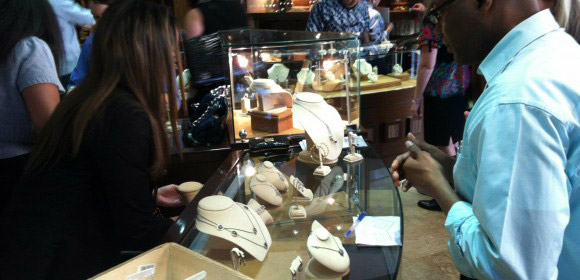By Abe Sherman
Inventory management and control is an economic imperative
Your need to deconstruct the components of your business in order to have a deeper understanding of its parts is an imperative. In the stages of deconstruction, you’ll begin to ascertain what elements are vital in the analysis of determining inventory levels…and determining inventory levels is your most significant objective. However, determining a goal for inventory levels is a personal one. It’s personal because of what comprises your company’s sales and your desired debt levels and cash flow, rather than relying on a formula that only measures turnover or GMROI (Gross Margin Return on Inventory).
The most often asked question is: How much inventory should a jewelry store own?
For example, if you were to generate $1 million in sales with a 50% Gross Profit (GP), how much inventory should you own in order to achieve a one-time turn? This is not an academic question; it pertains to nearly every jeweler at every level of sales volume. The overwhelmingly erroneous response to this question is $500,000. It’s wrong for a number of reasons and this article is going to address each of those reasons and demonstrate how to analyze every jewelry store, regardless of the specific model or sales volume.
When inventory goals are based on Sales, the store will be significantly overstocked.
Special Orders, Repairs, Custom (and in some cases Over The Counter purchases) are almost always included in ‘Sales’ and need to be taken out of the equation. While the netting out of non-showcase sales is becoming more commonplace, there are two other significant factors which also need to be considered when determining your company’s inventory levels. The first is gross profit and the second is some calculated return on investment. For the purposes of this discussion, we will use GMROI as a measure of return on investment.
The budgeting process always begins with finding a starting point, but which numbers do you use to access your inventory goal? Should you use Total Sales or do you begin simply with showcase sales and calculate from there? The issue gets further complicated because each store’s sales are made up of different components (for example, varying percentages of special orders, custom work, repairs or watches). Also, since the merchandise mix and pricing philosophies of each business are different, gross profit margins are going to be different, and as you will see, margin will have a significant impact on your inventory levels. Until now, there has not been a uniform formula that addresses an individual business.
While we’re on this subject, it’s important to note that your merchandising philosophy is a separate, although no less important area, but is beyond the scope of this particular discussion.
The Challenge
The challenge in developing a budgeting process is finding a single formula that all companies can use to get a close approximation of an inventory goal for their individual business model.However, it also has to take into consideration the variations from one business to another.
However, it also has to take into consideration the variations from one business to another. The budgeting process historically began with the Profit & Loss (P&L) or Income Statement. The majority of the budgeting formulas used begin with Sales (which is the first line of the Income Statement). However, Sales, as it turns out, may be the wrong number to begin with. For the purposes of this discussion, Sales will not be called “SALES” at all, but Revenue, since the number is a report of all cash coming into the business, regardless of the source.






